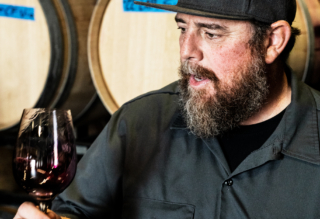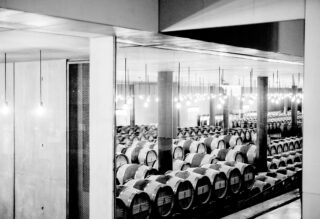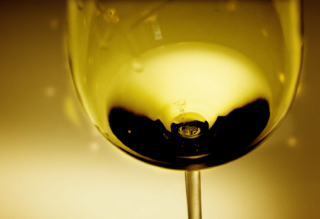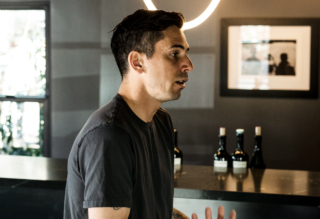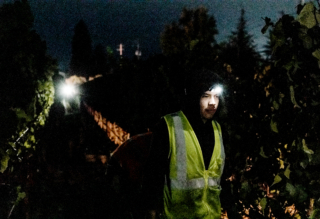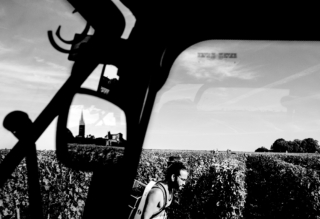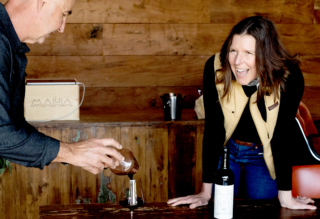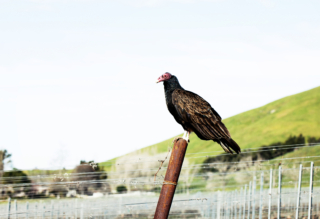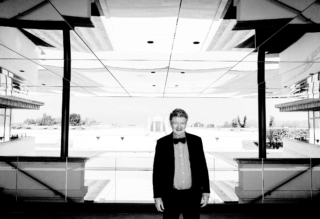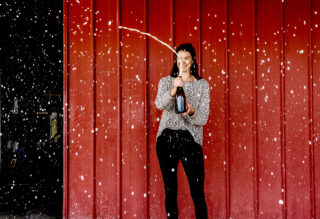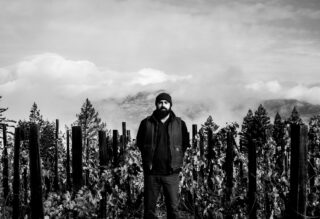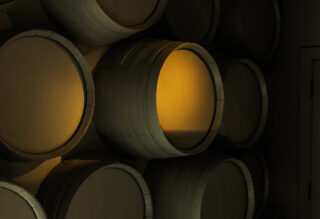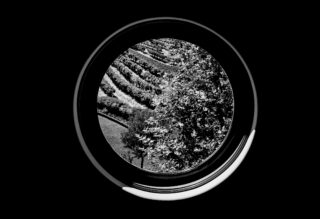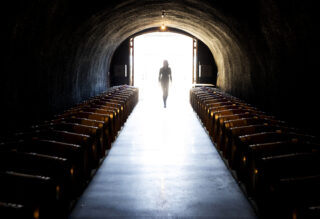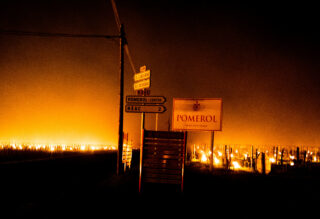Doing
The
Right
Thing
The MAHA Estate
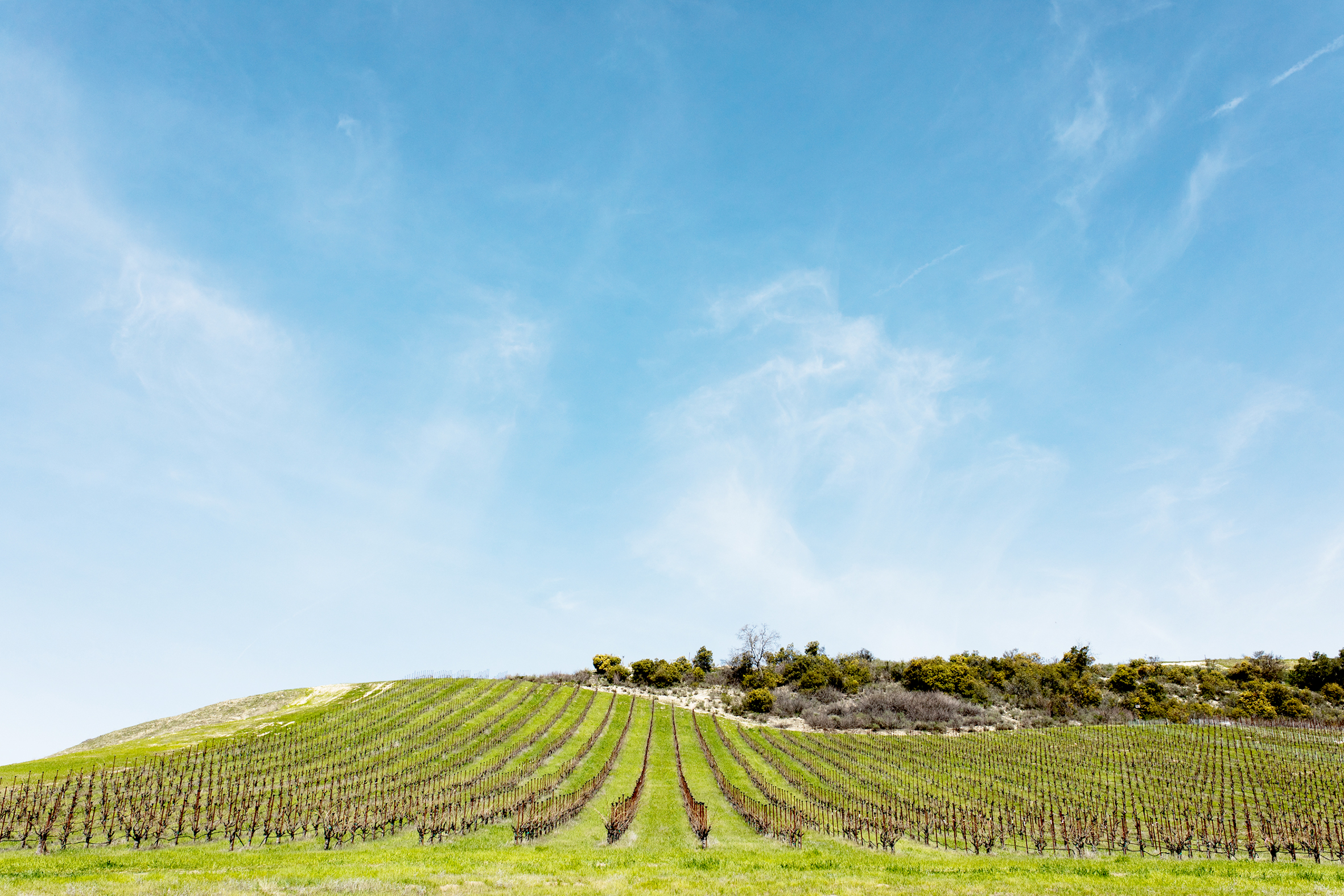
Cris Cherry is on a mission. He’s offered to cook lunch today, and we’re in his electric truck headed to a couple of different businesses in Paso Robles, where we’ll procure ingredients for lunch. First stop: Etto, an Italian marketplace known for its homemade pastas and broad selection of Italian goods, owned by locals Stephanie and Brian Terrizzi. They’ve got their own Cal-Italian wine brand called Giornata. "She’s such a sharp, holistic viticulturalist," Cris tells me of Stephanie, who’s known on California’s Central Coast as an intelligent grape farmer.
Inside, he’s greeted with enthusiastic hellos from the staff and from Matt Dusi, Janell Dusi’s (J. Dusi Wines) brother and a local multi-generational grape grower. They shake hands and catch up briefly while Cris picks up some freshly made spaghetti noodles. He tells me he’ll be making us tuna poached in olive oil with pasta.
Back inside his almost too-quiet electric truck, he puts on some music. "It Runs Through Me," by Tom Misch, featuring De La Sol. "I’m really into this guy." We make our way to Pier 46, a locally owned seafood market, where we’ll pick up the tuna. "They have a lot of wild-caught stuff, and they’re good people. And I like to support good people."
Afterward, we wind our way back up the foothills of Paso, leaving downtown behind for lush, heavily forested Peachy Canyon Road, home of the MAHA Estate, where he and his wife JoAnn reside and where they make the Villa Creek and MAHA wines. Another favorite of his comes over the stereo, Rufus du Sol. His playlist includes "a lot of 80’s dance shit, New Wave, Althouse, Thievery Corporation, Polo, and Pan. We love to see live music."
I’ve been keen to talk to him for some time now, as I’m intrigued by artists who continue to forge new pathways and refine their craft. His wines have evolved over the years, from big and extracted, to bright, balanced, and fresh. This is particularly true of his brilliant MAHA estate wines. They’re among my favorites from the United States, and his Clairette Blanche, called BAE (Before Anyone Else) is a revelation of floral and feral aromatics. Clean and balanced, yet somehow wild and unexpected.
"Our early wines were 16% alcohol, all day long, with maybe a little bit of sugar to cover up that booze."
"Our early wines were 16% alcohol, all day long, with maybe a little bit of sugar to cover up that booze. And, out of the shoot, those wines are showy, flashy, and sexy. But that’s a short fuse. Wines like that are good until they’re not. If there’s sugar, it’s just a matter of time…it’s not if, it’s when. ‘Finesse is elusive and restraint is hard to practice.’ The thing I’m most pleased about is that the MAHA estate and Villa Creek wines are elegant. Our early wines may have been considered big and monolithic. At this point, I am striving for complexity and nuance with the wines showing their sense of place."
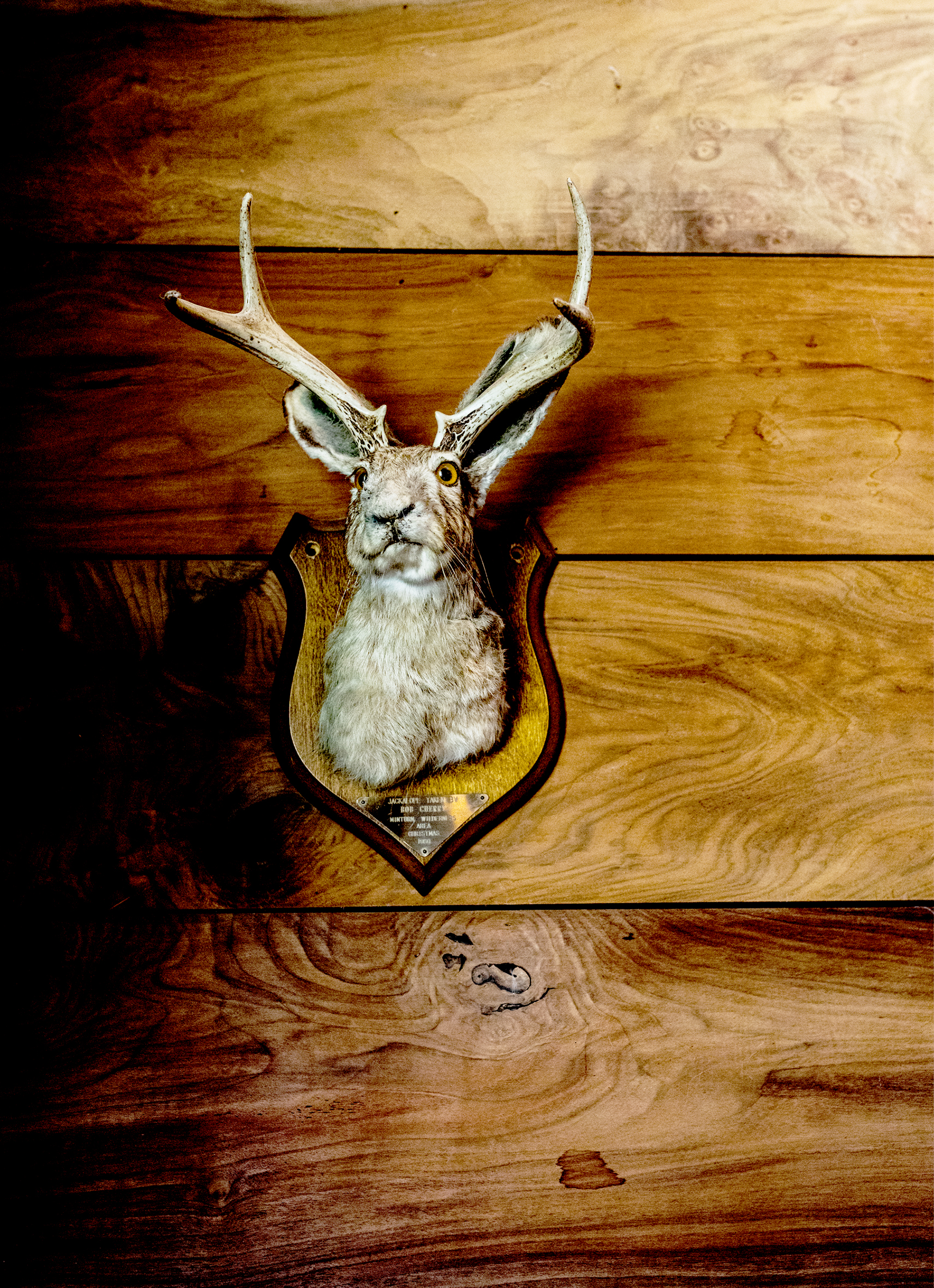
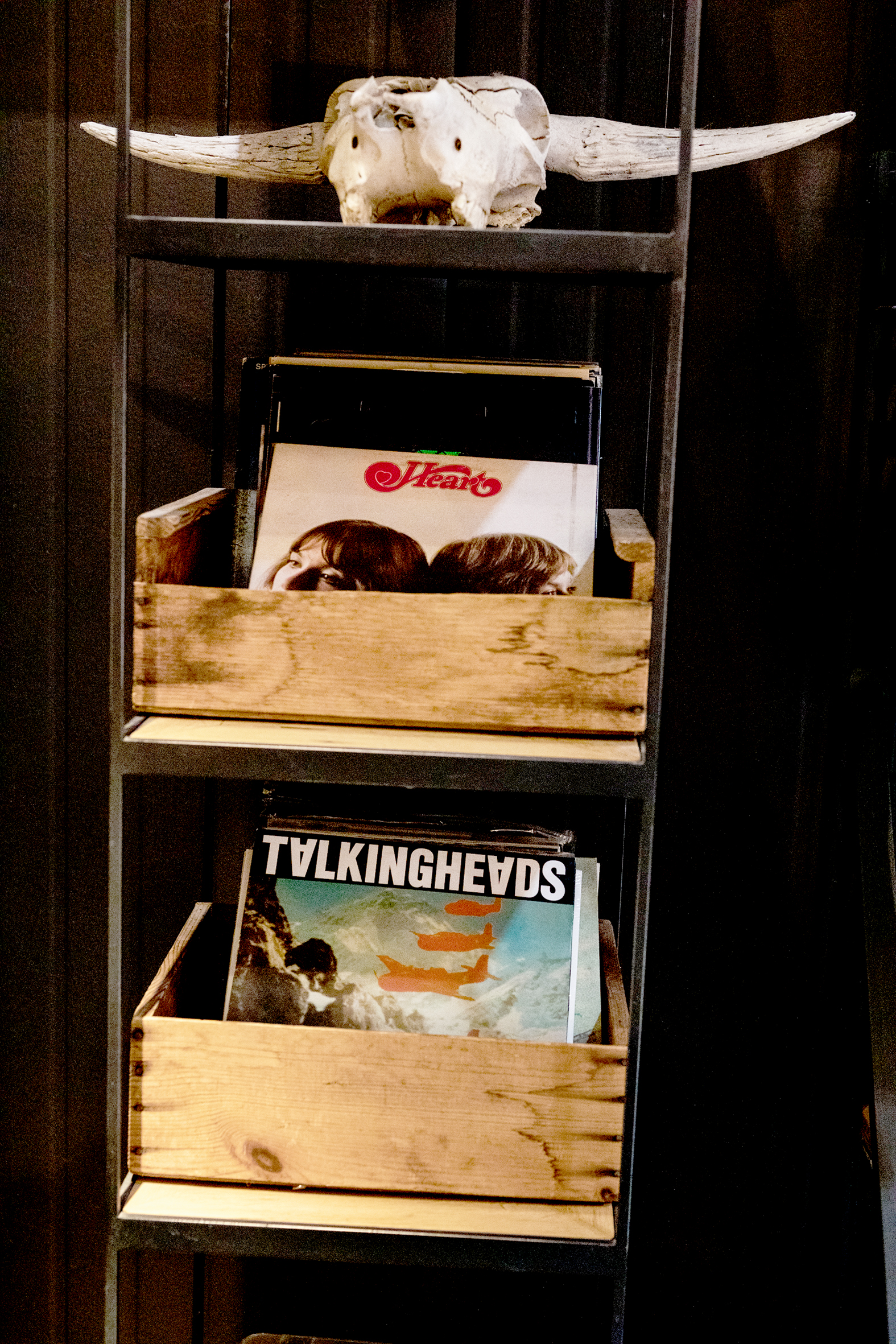
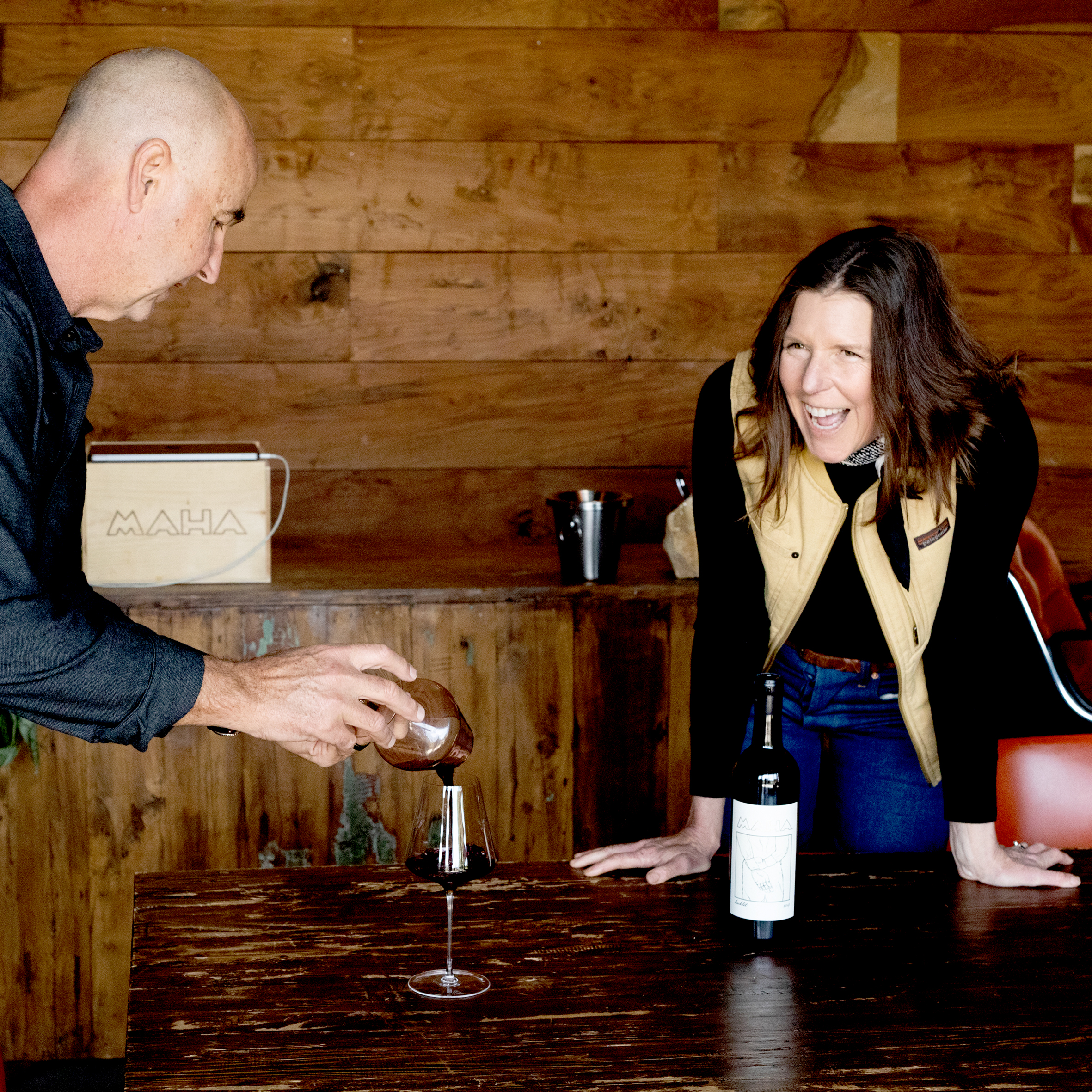
The Cherrys don’t just talk the talk, they walk the walk
The Cherrys have long been environmentally conscious, and their estate reflects their commitment to their core beliefs. Though many in the wine industry claim to farm sustainably, organically, or biodynamically, mostly for marketing purposes and to virtue-signal, the Cherrys don’t just talk the talk, they walk the walk. The entire MAHA estate is farmed biodynamically and organically, and they adhere to these principles closely. The property is certified by ROA (regenerative), CCOF organic and Demeter Biodynamic. JoAnn has recently been appointed to the board of directors of the CCOF (California Certified Organic Farmers) organization.
They farm this way because, Cris says, "we feel it makes the best wine…a wine that is the truest expression of the site. And it absolutely ensures that anyone who works in, on, or around the property is not going to be exposed to harmful things. Just think if you could make that proposition to some of the bigger guys to farm organically: They could reduce their farming costs over time and grow better fruit, require less additives in the winery, and make better wine. At the end of the day, you’re going to make more money, and you’ll be doing the right thing."
We gossip a bit about the social scene in the wine business. He explains that his wife JoAnn isn’t always fond of attending Cris’s mostly male winemaker "sausage fest" hangouts. "A gathering of a bunch of guys sharing their most expensive bottles is not her thing. Her interests lie in wines and conversations that are a little outside that box. We like to hang out with more mixed crowds." He cites a few long-time producer friends like Justin and Heather Smith (Saxum), Tyler Russell (helming an upcoming, unnamed project), Hillary and Anthony Yount (Royal Nonesuch Farms), Matt and Maureen Trevisan (Linne Calodo), Neil and Marcie Collins (Lone Madrone), Scott and Viquel Hawley (Torrin), as producing wines he finds interesting, and as people whose company they both enjoy.
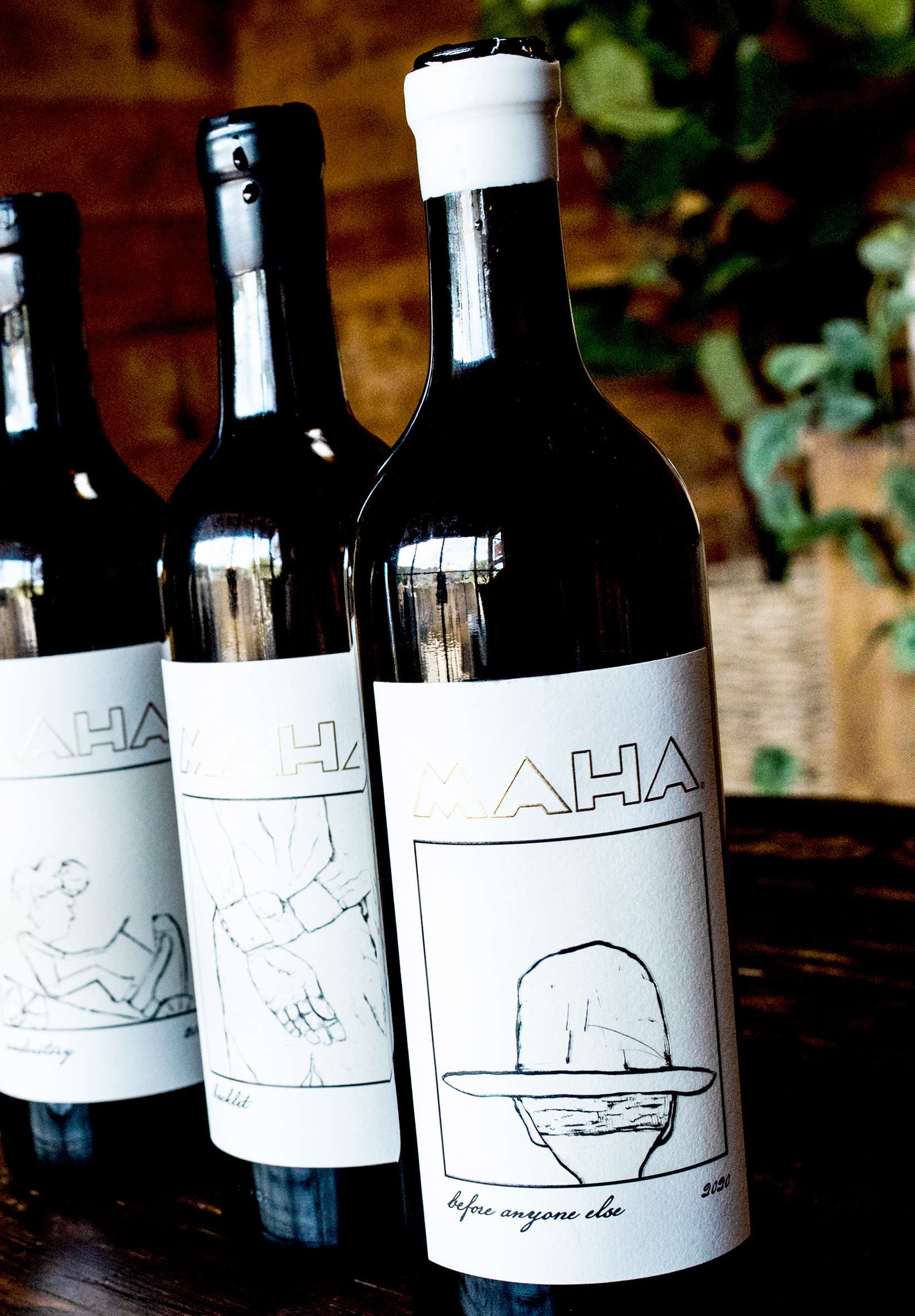
When we pull up, Cris hops out of the truck energetically. At 57, he is tall, lean, and confident, with closely shorn hair and an impish grin. Land prices in Paso Robles, as is the case in most of California, have risen dramatically in the last decade. "The opportunity we had to acquire this piece of property on the west side of Paso Robles is gone. We were so fortunate."
We’re greeted at their front door by JoAnn Cherry and a herd of dogs she’s trying to corral as we enter. Tall herself, warm and winsome, she welcomes us in.
They met in San Diego during their first year of college. "It was love at first sight for sure," she says. But she’d just left a boyfriend at home and didn’t want to get into another relationship right away, so, after dating briefly, they parted ways but remained friends. No romance blossomed for a decade. "We were never single at the same time. I was seventeen when we first met, and we got back together when I was twenty-seven," she adds.
The interior design of their home is not unlike the aesthetic behind their MAHA Estate wine labels. JoAnn, who is the designer behind both aesthetics, favors a minimalist approach, with a tendency towards outsider art. "I’m not much into trends," she says. A pleasant, fragrant blown-grass breeze enters through an opened window as we congregate around the island in their kitchen. He busies himself preparing lunch.
Cris has recently returned from Chateauneuf where he was on a barrel junket with Anthony Yount, Don Burns, and a handful of other producers. "We tasted some old Pure. Had a nice visit with Anne Charlotte of Font Du Loup. But the highlight was half a day with Louis Barroul. A Grenache master, for sure, in Gigondas."
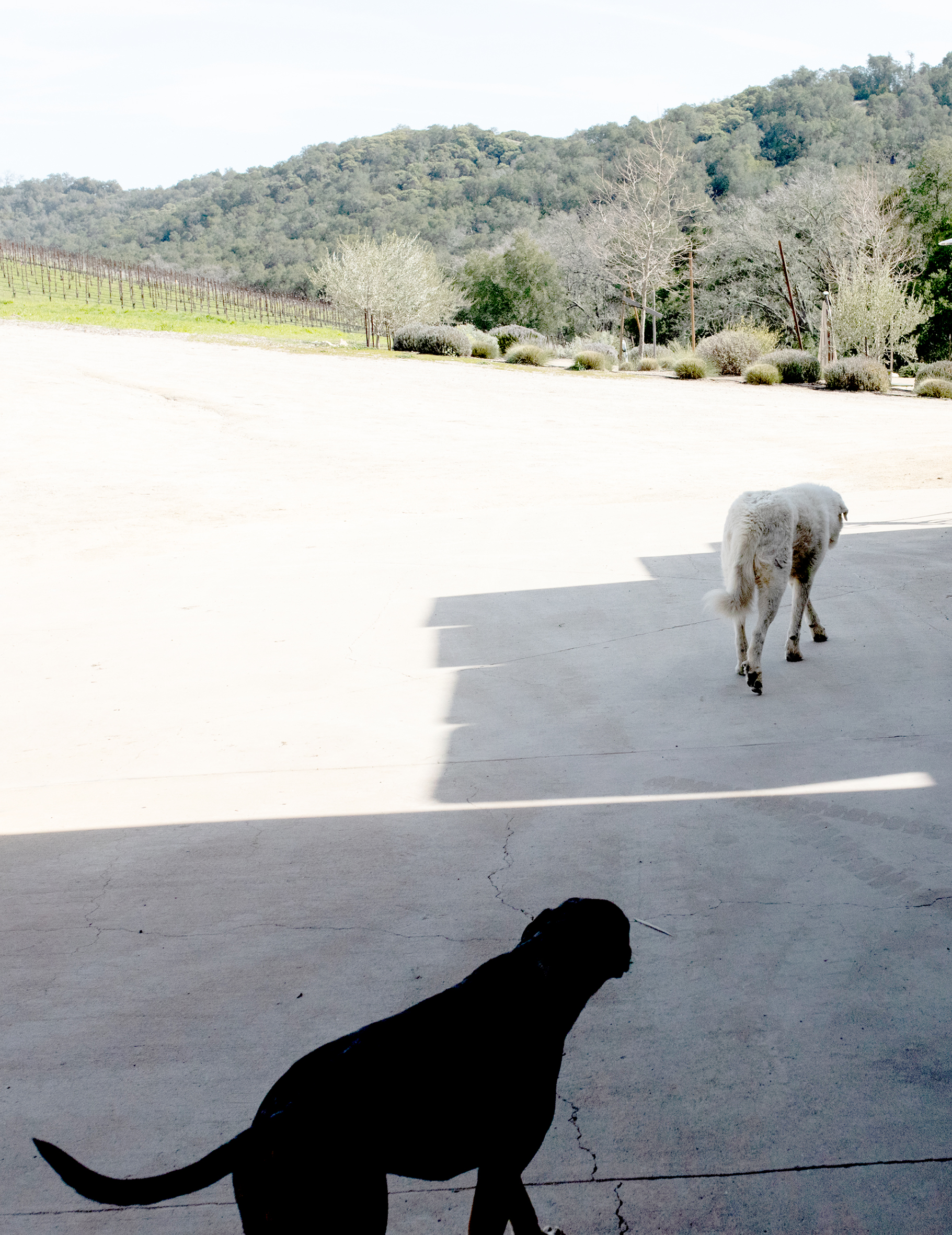
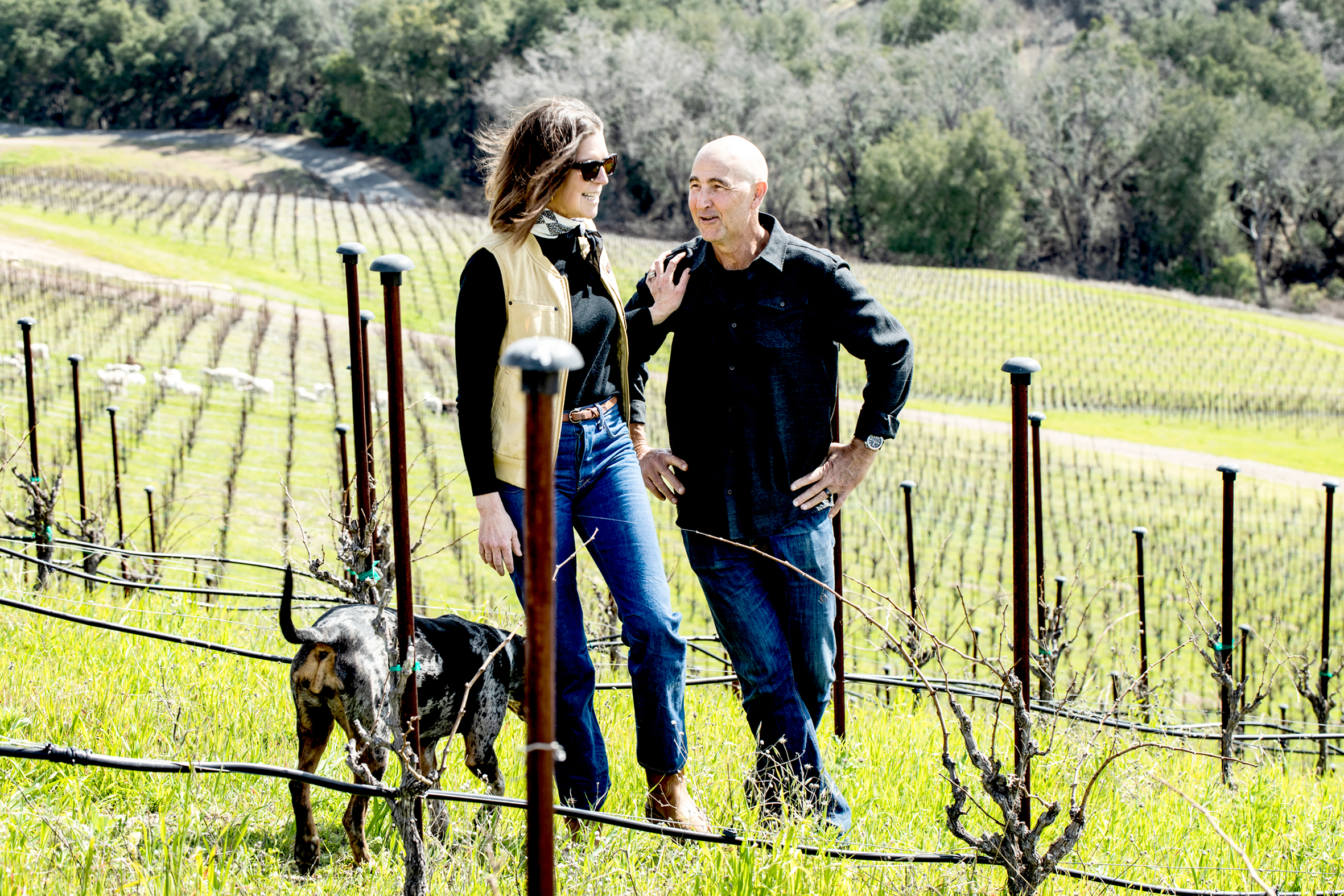
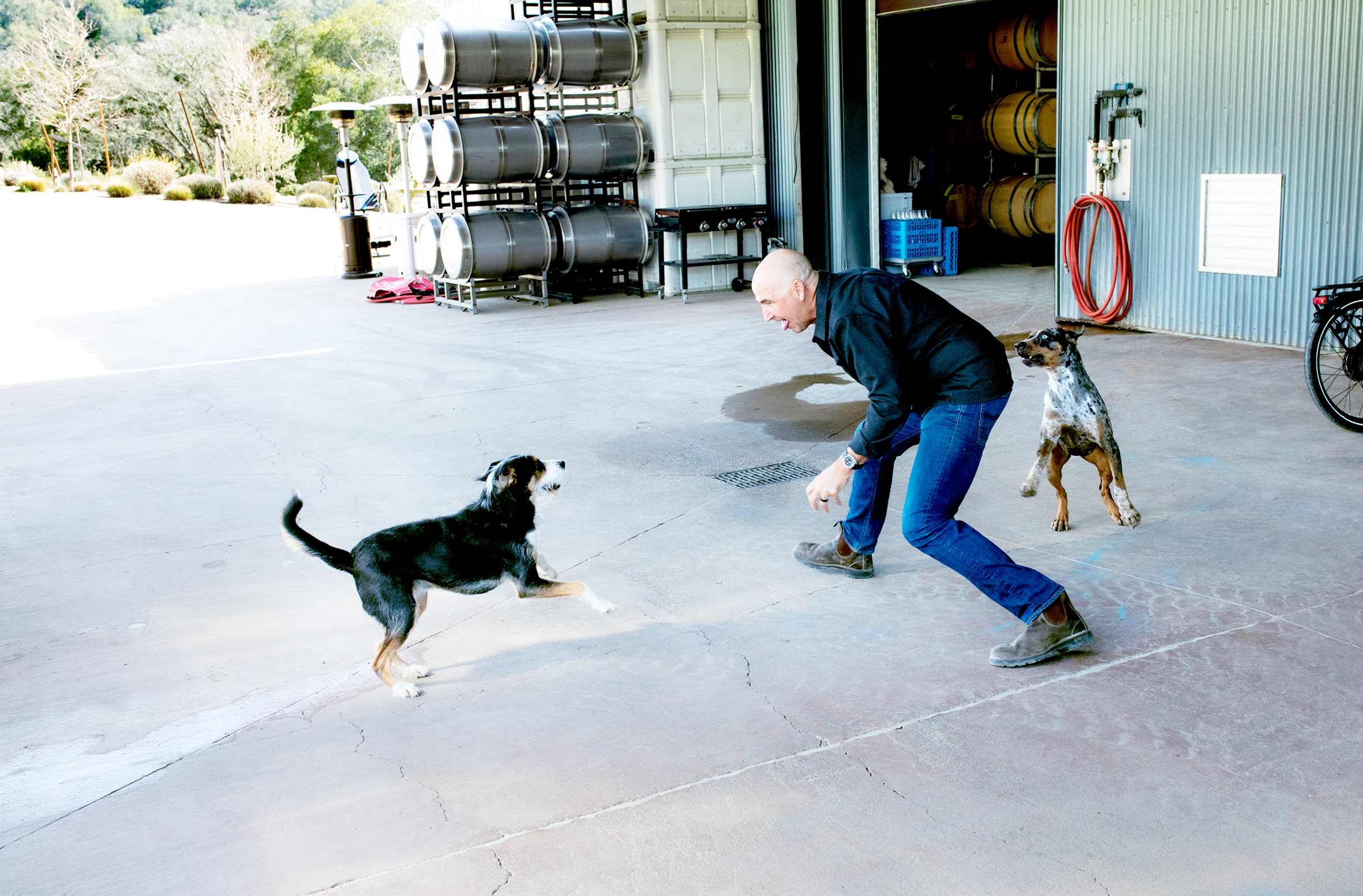
The Cherrys met Barroul in 1998, before they started making wine. At the time, they owned a popular restaurant, also called Villa Creek, on the square in downtown Paso Robles. "That was our first trip to France together," JoAnn says. This was when their son, Henri, was 2, and Camille, their daughter, was 4. "We went to Louis’ place, and he had a field of grass in his front yard as big as a soccer field, and his kids were similar in age to ours. He said his neighbors questioned his judgment because he hadn’t planted that space to vines, but he told us, ‘Our kids would have no place to play.’"
Cris grew up in the restaurant business in Colorado. After getting "sick of the snow," he moved west to attend University of San Diego. His parents followed him out to San Diego and purchased a restaurant there. "I decided to get into the family business when all of my friends were wearing suits on a sunny day like today, and I thought to myself, nah…"
The Cherrys moved to Paso Robles in 1996 and opened their restaurant two years later. The 2002 earthquake, during which the entire Paso Robles town square was cordoned off with chain link fencing, set their business back some, as did the economic downturn of 2008, just a few years later. They’d heard that Paso is "the next Napa," but that’s been slow to happen. "Napa is a brand. Tulum, where we were last year, in Riviera Maya, is a brand," he says. "Paso Robles is becoming a brand, but it’s not there yet." JoAnn adds, "Maybe when it becomes a brand, it loses its charm?"
"Paso Robles is becoming a brand, but it’s not there yet."
When they still lived in San Diego, they both got into wine. They enjoyed eating out and exploring wines at the fine dining establishments that popped up in San Diego, but those spots were fleeting. At that time, Cris says, "People weren’t eating out a lot in San Diego. They were spending their money on bikinis and running shoes." Neither of them grew up "in the wine business or on a farm or anything like that," she adds. "We had a half-acre with a garden, but winemaking was never something we thought we could get into. I always just thought, you’re born into it."
When they moved to Paso Robles, the wine business suddenly seemed doable.
Their friends Justin Smith and Matt Trevisan started making wine with some left-over James Berry Vineyard fruit while they were still cellar workers. She says, "We started helping them out. We’d grab the kids, and it’d be 11:00 o’clock at night. It was amazing. We got the bug."
Friends helped the Cherrys acquire a little local fruit, and they ordered their first barrel. "One barrel turned into seven," he says. They secured some Grenache from Denner Vineyard on the advice of Justin Smith. "All of a sudden, I had more Grenache than anybody in the area. I was an outlier." The first Villa Creek bottling was 2001.
JoAnn and Cris have worked side by side since establishing their restaurant and later, their winery. At times, he says, "we’ve driven each other crazy." During the restaurant years, JoAnn says she was "as involved as I could be. We didn’t have any family here and I didn’t want to leave my kids with anybody. I was the pastry chef. I did the website, the menu. Cris was doing the wine-buying. I was still breastfeeding, so couldn’t really drink a lot, so I was watching him evolve in his wine knowledge and I was just getting left in the dust. I had a lot of catching up to do."
When they started making wine, she did punch-downs at night while he was working at the restaurant. "We had occasional conflicts. Creative differences, but for the most part, we vibe off each other," she tells me. "If we’re ever disagreeing about something, we eventually find out we’re on the same page. We’ll go, ‘Why are we even arguing about this?’"
She references these differences as part of their creative exploration. When their kids went off to college, she could finally work a harvest all the way through. "I came in and started asserting my opinion on how I thought certain protocols could be improved. Cris didn’t so much care for that but eventually we found our groove." JoAnn says with a chuckle.
Some of those creative differences included their approach to blending. She was of the mind that they needed to be "more systematic about blending. We needed to take notes." She seems to have won that argument, and they now blind taste every barrel, judiciously taking detailed notes on each wine’s elevage.
"We taste differently. We cook differently," he says. JoAnn likes recipes for inspiration, whereas Cris cooks by feel. Here, he jokingly mimics some of the more boastful winemakers, "Well, you know," he says, in an intentionally exaggerated professorial tone, impersonating them, "we blend over 7 weeks. And we taste meticulously. And 1/3 of 1% of this viognier changed the whole thing. 1/3 of 1%!" He laughs. "I think across the entire food and beverage platform there is a baffling amount of bullshit. It gets so annoying. The douche factor is something you have to navigate."
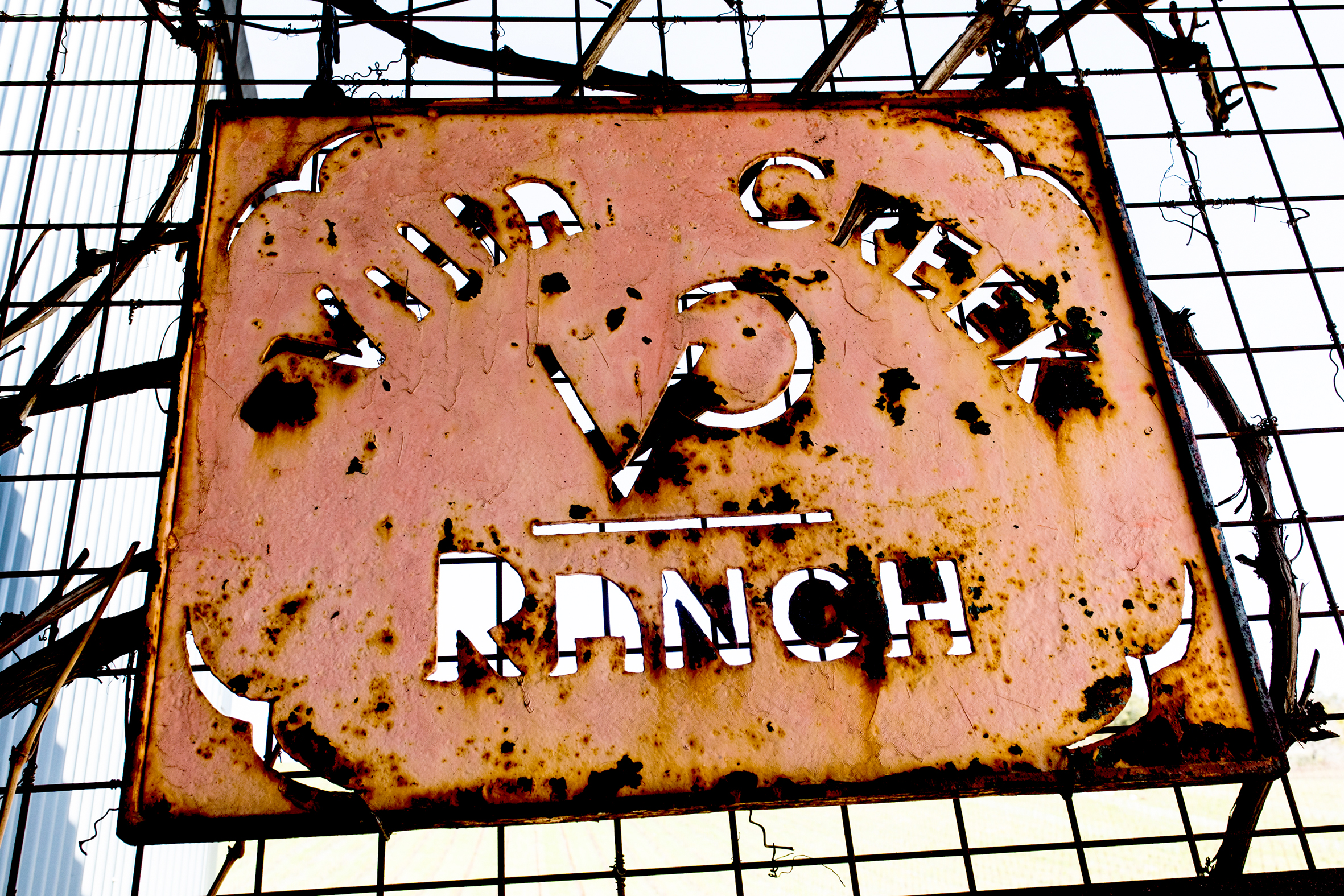
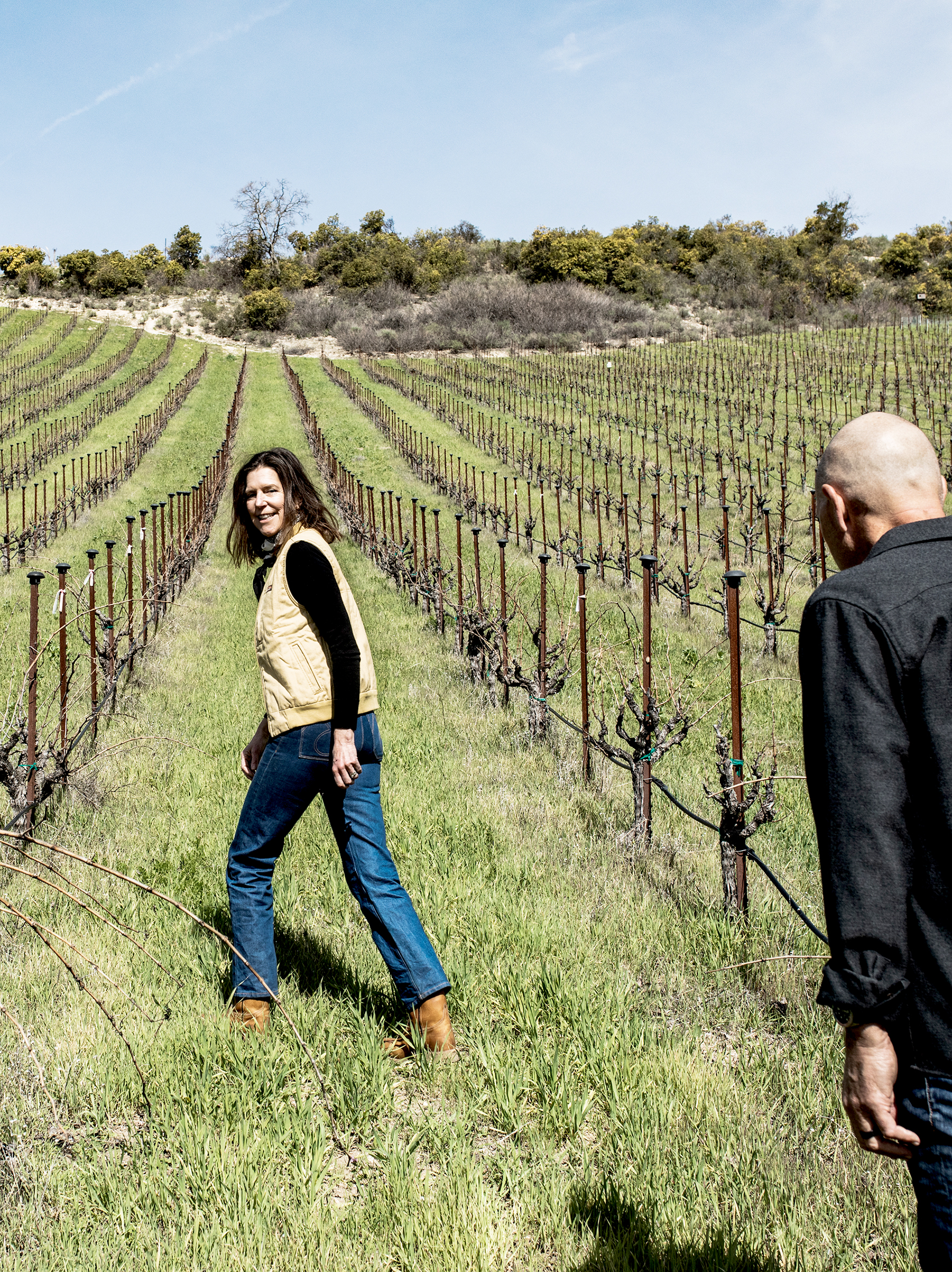
"There are no magic techno-wizard winemaking tricks."
Camille, 29, now works full-time for the family business. "It’s just the three of us in the office, JoAnn says. "During Covid, Henri was here. Henri is me. Camille is Cris," she says while Cris laughs in the background. "It was nice to have an ally when Henri was here. Now I’m outnumbered, and it can be challenging, but we are always working on improving our communication skills."
When the Cherry kids were growing up, they were always around the winery. "They know what it is to be in the family business," she says. They were "both feral children and ran around in the dirt a lot and were always out in nature. We always had a garden." Both kids, she says, are creative. They did alternative schooling, attending the local Montessori school, but Camille didn’t find her academic groove until she went to public school. She likes structure. She’s a plant lover and studied landscape architecture at Cal Poly and is the in-house landscape designer. "Henri was more adaptive when it came to academics," she continues. "He now lives in Santa Barbara, where he attended UCSB on a volleyball scholarship, works for Patagonia, and has his own small natural wine brand called Daft Punch, under which he makes pet nat and piquet. He is also a talented musician and continues to add songs to his Spotify portfolio under Julian Cherry."
Villa Creek shot to notoriety early on. "That surprised us for sure," he says. "We got a "New Wines, New Faces" article in the Wine Spectator (like any well-tuned couple, they finish each other’s sentences frequently.) "The phone started ringing off the hook," she says. "We didn’t even have a mailing list, so we started taking down all of these numbers."
They sold the restaurant in 2017 to focus exclusively on wine. He tells me that, in hindsight, they’d do things differently today. They started at very low-price points just to gain exposure to the wines. "It took us 12 years to get our wines priced to where everyone else’s were." With the MAHA Estate wines, they’ve entered the market with higher price points. Still, their BAE Clairette Blanche, even at $100.00 a bottle, over-delivers at that price point and may be a benchmark in the making.
More recently, they’ve launched Cherry House, an entry-level selection of wines priced at about $25.00 a bottle, made from organic grapes. "I love that it’s all organic and well made at an affordable price point," JoAnn says.
We move outside to enjoy our lunch al fresco. We’re joined by Camille, who is the Director of Customer Relations, and Oliver Mikkelsen, whom they’ve recently promoted to winemaker (Cris remains Director of Winemaking). Young, energetic, and polite, they catch up with each other briefly, discussing Camille and her husband, Kenton’s, next Dungeons and Dragons game. She and Kenton also enjoy cosplay, attending Renaissance festivals as their schedules permit. Married late last year, they produce mead and organic honey together at the MAHA estate under the name Maddox Meadery.
We enjoy a few Villa Creek Cellars and MAHA Estate wines with lunch. For all intents and purposes, these wines could be classified as natural, at least according to the requirements of the Natural Coast Wine Festival in Santa Barbara, which they’ll be attending in a few days. According to the festival’s website, "all wine must be farmed organically as a minimum. Whether certified or not, vineyards must be farmed without any synthetic pesticides. Certification from CCOF, Demeter Biodynamic, etc., is welcome and appreciated. All wines must be fermented natively - whether spontaneously or using a pied-de-cuve. Sparkling wines may be accepted when fermented with non-native yeast if noted in the technical information. No sterile filtration, no fining. Absolutely no additives except for SO2 with a maximum total SO2 below 70 ppm, regardless of wine style. No magic techno-wizard winemaking tricks. This includes reverse-osmosis, cryo-extraction, spinning cone filtration, etc. None of these rules are negotiable."
Occasionally, the table falls quiet. The resplendent surroundings, fresh air, and birdsong compel us to take in the nature around us. The estate vineyards blanket the hillsides above where we’re seated. "I would love to be out there more," Cris says. "It would be great to not have to work on sales or the financial equation of the business, but that has its call. I continue to learn and be inspired by lots of people that are in the vineyards all the time, here and abroad. As we now have the MAHA estate, I really don’t want to go anywhere else for fruit. It’s the most fun fruit to work with. The ferments are the soundest. The fruit is the most complex. MAHA fruit makes the best wine because the vineyard is farmed the way it’s farmed."
–
Article by R. H. Drexel
Photography by Svante Örnberg
See more work from Svante at svanteornberg.se by clicking here!
